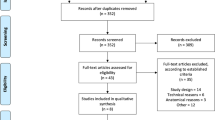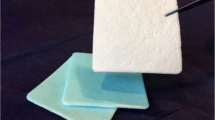Abstract
Approximately one million spinal surgeries are performed in the United States each year. The risk of an incidental durotomy (ID) and resultant persistent cerebrospinal fluid (CSF) leakage is a significant concern for surgeons, as this complication has been associated with increased length of hospitalization, worse neurological outcome, and the development of CSF fistulae. Augmentation of standard dural suture repair with the application of fibrin glue has been suggested to reduce the frequency of these complications. This study examined unintended durotomies during lumbar spine surgery in a large surgical patient cohort and the impact of fibrin glue usage as part of the ID repair on the incidence of persistent CSF leakage. A retrospective analysis of 4,835 surgical procedures of the lumbar spine from a single institution over a 10-year period was performed to determine the rate of ID. The 90-day clinical course of these patients was evaluated. Clinical examination, B-2 transferrin assay, and radiographic imaging were utilized to determine the number of persistent CSF leaks after repair with or without fibrin glue. Five hundred forty-seven patients (11.3%) experienced a durotomy during surgery. Of this cohort, fibrin glue was used in the dural repair in 278 patients (50.8%). Logistic models evaluating age, sex, redo surgery, and the use of fibrin glue revealed that prior lumbar spinal surgery was the only univariate predictor of persistent CSF leak, conferring a 2.8-fold increase in risk. A persistent CSF leak, defined as continued drainage of CSF from the operative incision within 90 days of the surgery that required an intervention greater than simple bed rest or over-sewing of the wound, was noted in a total of 64 patients (11.7%). This persistent CSF leak rate was significantly higher (P < 0.001) in patients with prior lumbar surgery (21%) versus those undergoing their first spine surgery (9%). There was no statistical difference in persistent CSF leak between those cases in which fibrin glue was used at the time of surgery and those in which fibrin glue was not used. There were no complications associated with the use of fibrin glue. A history of prior surgery significantly increases the incidence of durotomy during elective lumbar spine surgery. In patients who experienced a durotomy during lumbar spine surgery, the use of fibrin glue for dural repair did not significantly decrease the incidence of a persistent CSF leak.

Similar content being viewed by others
References
Borgesen SE, Vang PS (1973) Extradural pseudocysts. A cause of pain after lumbar-disc operation. Acta Orthop Scand 44:12–20
Bosacco SJ, Gardner MJ, Guille JT (2001) Evaluation and treatment of dural tears in lumbar spine surgery: a review. Clin Orthop Relat Res 238–247. doi:10.1097/00003086-200108000-00033
Cain JE Jr, Lauerman WC, Rosenthal HG, Broom MJ, Jacobs RR (1991) The histomorphologic sequence of dural repair. Observations in the canine model. Spine 16:S319–S323. doi:10.1097/00007632-199108001-00002
Cammisa FP Jr, Girardi FP, Sangani PK, Parvataneni HK, Cadag S, Sandhu HS (2000) Incidental durotomy in spine surgery. Spine 25:2663–2667. doi:10.1097/00007632-200010150-00019
Eismont FJ, Wiesel SW, Rothman RH (1981) Treatment of dural tears associated with spinal surgery. J Bone Joint Surg Am 63:1132–1136
Hadley MN, Martin NA, Spetzler RF, Sonntag VK, Johnson PC (1988) Comparative transoral dural closure techniques: a canine model. Neurosurgery 22:392–397
Jackson MR, Alving BM (1999) Fibrin sealant in preclinical and clinical studies. Curr Opin Hematol 6:415–419. doi:10.1097/00062752-199911000-00011
Jarzem P, Harvey EJ, Shenker R, Hajipavlou A (1996) The effect of fibrin sealant on spinal fusions using allograft in dogs. Spine 21:1307–1312. doi:10.1097/00007632-199606010-00005
Jones AA, Stambough JL, Balderston RA, Rothman RH, Booth RE Jr (1989) Long-term results of lumbar spine surgery complicated by unintended incidental durotomy. Spine 14:443–446. doi:10.1097/00007632-198904000-00021
Koo J, Adamson R, Wagner FC Jr, Hrdy DB (1989) A new cause of chronic meningitis: infected lumbar pseudomeningocele. Am J Med 86:103–104. doi:10.1016/0002-9343(89)90238-6
Medtech Insight (2005) U.S. markets for spinal fusion products, report #A303. http://www.medtechinsight.com/ReportA303.html
Patel VV, Zhao L, Wong P, Pradhan BB, Bae HW, Kanim L, Delamarter RB (2006) An in viro and in vivo analysis of fibrin glue use to control bone morphogenetic protein diffusion and bone morphogenetic protein-stimulated bone growth. Spine J 6:397–403. doi:10.1016/j.spinee.2005.11.006 (discussion 404)
Pomeranz S, Constantini S, Umansky F (1991) The use of fibrin sealant in cerebrospinal fluid leakage. Neurochirurgia 34:166–169
Rampersaud YR, Moro ER, Neary MA, White K, Lewis SJ, Massicotte EM, Fehlings MG (2006) Intraoperative adverse events and related postoperative complications in spine surgery: implications for enhancing patient safety founded on evidence-based protocols. Spine 31:1503–1510. doi:10.1097/01.brs.0000220652.39970.c2
Risch L, Lisec I, Jutzi M, Podvinec M, Landolt H, Huber AR (2005) Rapid, accurate and non-invasive detection of cerebrospinal fluid leakage using combined determination of beta-trace protein in secretion and serum. Clin Chim Acta 351:169–176. doi:10.1016/j.cccn.2004.09.008
Rousou J, Levitsky S, Gonzalez-Lavin L, Cosgrove D, Magilligan D, Weldon C et al (1989) Randomized clinical trial of fibrin sealant in patients undergoing resternotomy or reoperation after cardiac operations. A multicenter study. J Thorac Cardiovasc Surg 97:194–203
Sawamura Y, Asaoka K, Terasaka S, Tada M, Uchida T (1999) Evaluation of application techniques of fibrin sealant to prevent cerebrospinal fluid leakage: a new device for the application of aerosolized fibrin glue. Neurosurgery 44:332–337. doi:10.1097/00006123-199902000-00048
Stolke D, Sollmann WP, Seifert V (1989) Intra- and postoperative complications in lumbar disc surgery. Spine 14:56–59. doi:10.1097/00007632-198901000-00011
Tafazal SI, Sell PJ (2005) Incidental durotomy in lumbar spine surgery: incidence and management. Eur Spine J 14:287–290. doi:10.1007/s00586-004-0821-2
TISSEEL [Fibrin Sealant] full prescribing information, 0707074. http://www.baxter.com/products/biopharmaceuticals/biosurgery/sub/tisseel.html
Turgut M, Erkus M, Tavus N (1999) The effect of fibrin adhesive (Tisseel) on interbody allograft fusion: an experimental study with cats. Acta Neurochir 141:273–278. doi:10.1007/s007010050298
Verner EF, Musher DM (1985) Spinal epidural abscess. Med Clin North Am 69:375–384
Wang JC, Bohlman HH, Riew KD (1998) Dural tears secondary to operations on the lumbar spine. Management and results after a two-year-minimum follow-up of eighty-eight patients. J Bone Joint Surg Am 80:1728–1732. doi:10.1302/0301-620X.80B6.8966
Weinstein JN, Lurie JD, Tosteson TD, Skinner JS, Hanscom B, Tosteson AN et al (2006) Surgical vs nonoperative treatment for lumbar disk herniation: the Spine Patient Outcomes Research Trial (SPORT) observational cohort. JAMA 296:2451–2459. doi:10.1001/jama.296.20.2451
Weinstein JN, Tosteson TD, Lurie JD, Tosteson AN, Hanscom B, Skinner JS et al (2006) Surgical vs nonoperative treatment for lumbar disk herniation: the Spine Patient Outcomes Research Trial (SPORT): a randomized trial. JAMA 296:2441–2450. doi:10.1001/jama.296.20.2441
Weinstein JN, Lurie JD, Tosteson TD, Hanscom B, Tosteson AN, Blood EA et al (2007) Surgical versus nonsurgical treatment for lumbar degenerative spondylolisthesis. N Engl J Med 356:2257–2270. doi:10.1056/NEJMoa070302
Wiesel SW (1985) The multiply operated lumbar spine. Instr Course Lect 34:68–77
Zarate-Kalfopulos B, Estrada-Villasenor E, Lecona-Buitron H, Arenas-Sordo Mde L, Garza-Hernandez AC, Reyes-Sanches A (2007) Use of fibrin glue in combination with autologous bone graft as bone enhancer in Posterolateral spinal fusion. An experimental study in New Zealand rabbits. Cir Cir 75:201–205
Acknowledgment
The authors have no financial relationship with Baxter Healthcare Corporation, the manufacturer of the Tisseel VH fibrin sealant.
Author information
Authors and Affiliations
Corresponding author
Rights and permissions
About this article
Cite this article
Jankowitz, B.T., Atteberry, D.S., Gerszten, P.C. et al. Effect of fibrin glue on the prevention of persistent cerebral spinal fluid leakage after incidental durotomy during lumbar spinal surgery. Eur Spine J 18, 1169–1174 (2009). https://doi.org/10.1007/s00586-009-0928-6
Received:
Revised:
Accepted:
Published:
Issue Date:
DOI: https://doi.org/10.1007/s00586-009-0928-6




